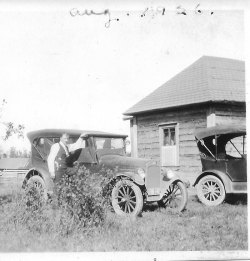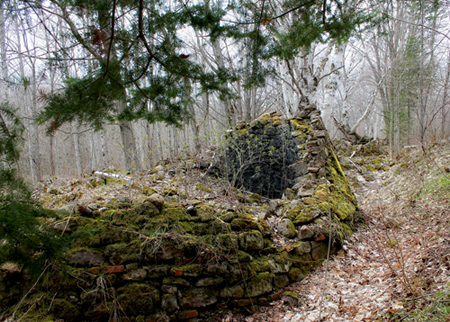Onota Township History
Early Settlement

Pihlainen Home, 1926
Onota Township has a rich history in producing lumber for building and in charcoal manufacturing. This charcoal was essential to the smelting process of iron ore. The ore was cast in long ingots called pigs, hence the term ‘pig iron.’ Early Scandinavian and European settlers came to the area to work and homestead.
A significant amount of information on the region and Onota area is available in several books – such as Alger County, A Centennial History (available through the Alger County Historical Society  ); Harvesting the Wilderness, by John Parlin, Bea Anderson and James L. Carter; They Came to Laughing Whitefish, by Fred Lindquist; and a book titled History of the Finns in Michigan, by Armas K.E. Holmio, which gives the reader a true account of the struggles and hardships that early immigrants faced as they pioneered the UP.
); Harvesting the Wilderness, by John Parlin, Bea Anderson and James L. Carter; They Came to Laughing Whitefish, by Fred Lindquist; and a book titled History of the Finns in Michigan, by Armas K.E. Holmio, which gives the reader a true account of the struggles and hardships that early immigrants faced as they pioneered the UP.
Local Historical Sites
Rock River Kilns

Charcoal was made in the kilns to provide fuel for early iron smelting. The kilns sit next to the old rail bed of the Duluth, South Shore and Atlantic Railway. The sandstone, beehive-shaped kilns operated from 1879 to 1896, when the supply of hardwoods needed for charcoal was exhausted. The location and detailed history of the kilns. 
Tyoga Settlement (1905-1907)
Today, little remains of this frontier logging town except an interpretive trail  that tells the story of a community that is now a ghost town. The trail meanders along the Laughing Whitefish River and features a variety of natural environments. Although it is not difficult terrain, visitors should bring bug spray or headnets, and wear long pants and hiking boots – due to the wetland environment and insects. Starting at M28, the trail is about 2 miles north on Laughing Whitefish Point Road (also known as North Point Road). A sign points into the parking area. The trail is maintained through cooperative efforts of Onota Township, volunteers (“Friends of the Tyoga” group), and the Michigan DNR
that tells the story of a community that is now a ghost town. The trail meanders along the Laughing Whitefish River and features a variety of natural environments. Although it is not difficult terrain, visitors should bring bug spray or headnets, and wear long pants and hiking boots – due to the wetland environment and insects. Starting at M28, the trail is about 2 miles north on Laughing Whitefish Point Road (also known as North Point Road). A sign points into the parking area. The trail is maintained through cooperative efforts of Onota Township, volunteers (“Friends of the Tyoga” group), and the Michigan DNR  parks & recreation division (under Van Riper State Park).
parks & recreation division (under Van Riper State Park).